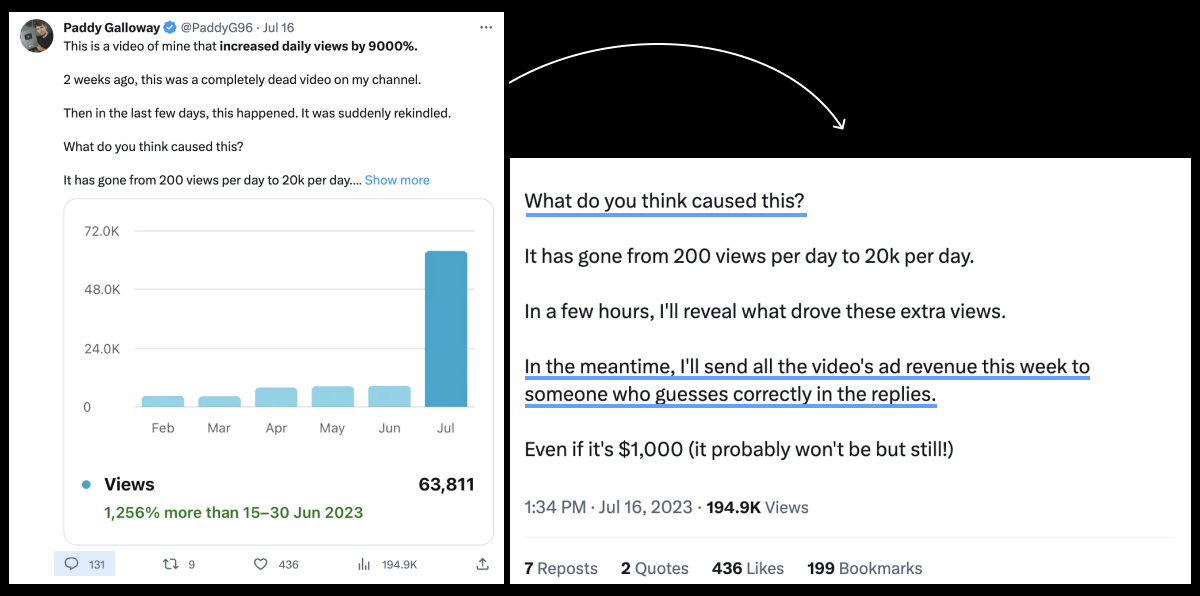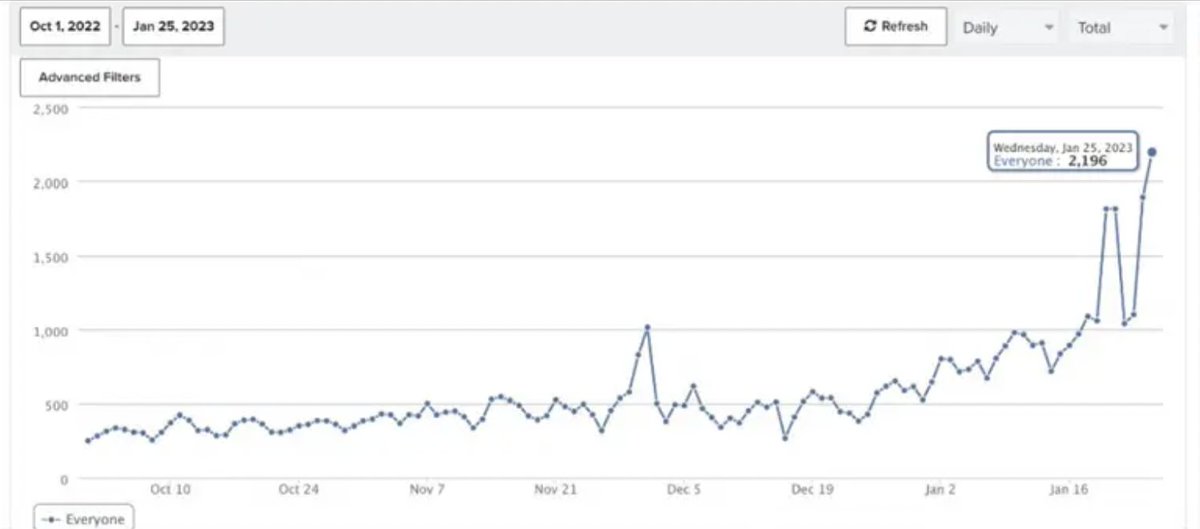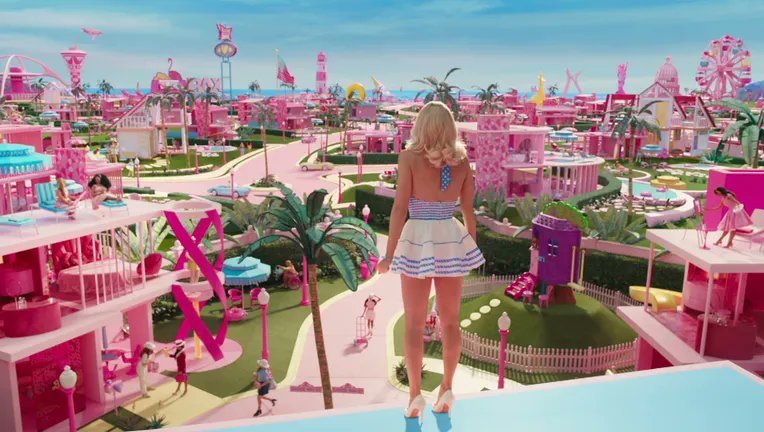I studied hundreds of top copywriting examples with @heyblake.
Use these 30 copywriting tips to convert readers into customers 🧵
Use these 30 copywriting tips to convert readers into customers 🧵
Tip from Alex: Repeat Yourself
Reason: Your main benefit shouldn’t be expressed subtly. Repeat it three times. Make it known.
Example: Apple’s M1 Chip


Reason: Your main benefit shouldn’t be expressed subtly. Repeat it three times. Make it known.
Example: Apple’s M1 Chip
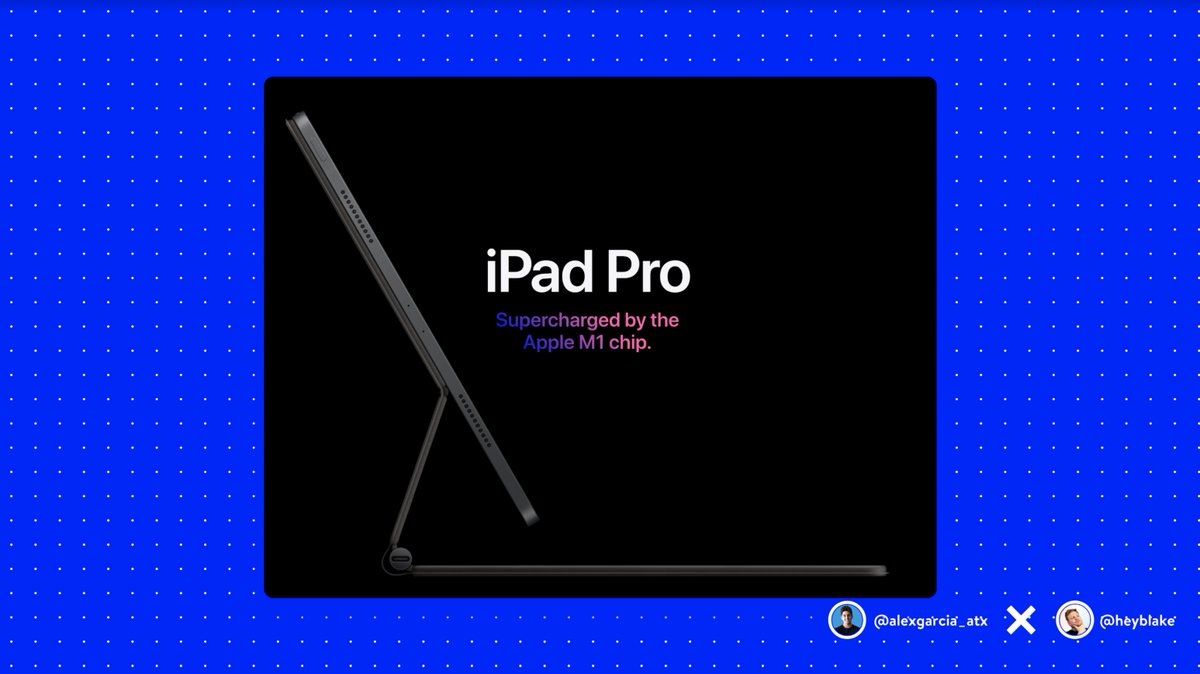


Tip from Blake: Start with goals for the copy.
Reason: You need to know what you are writing, for whom, and what action it should lead to. No guesswork.
Example: My content engine at swipefile.me
Reason: You need to know what you are writing, for whom, and what action it should lead to. No guesswork.
Example: My content engine at swipefile.me
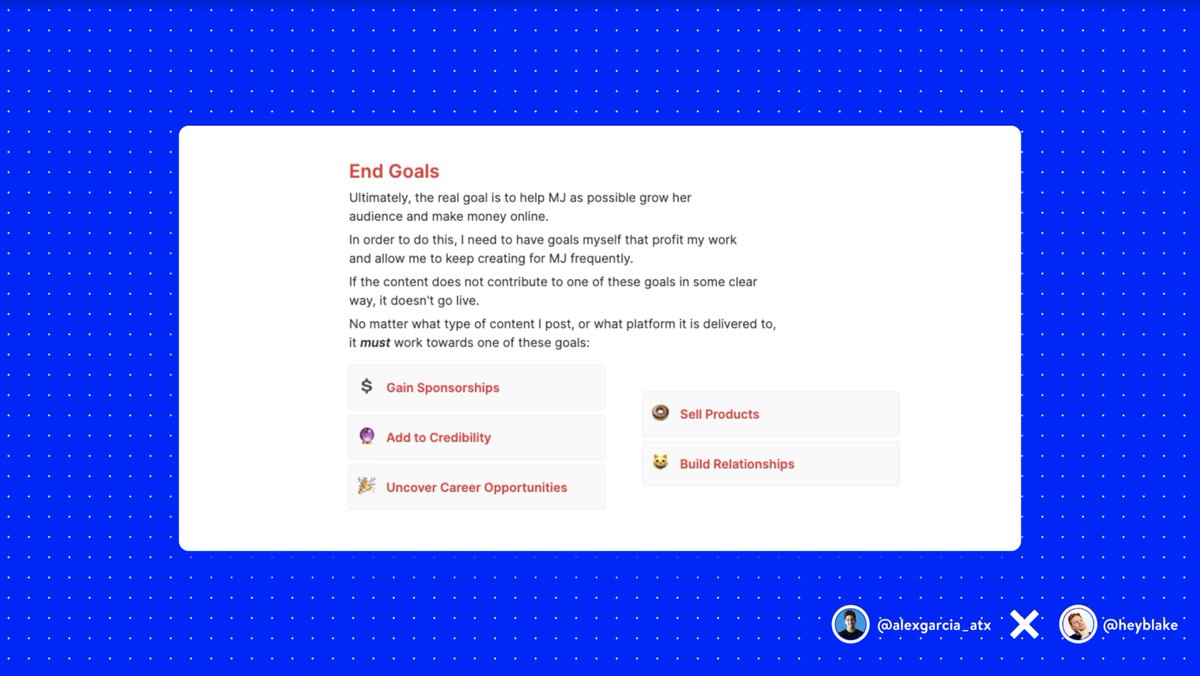
Tip from Alex: Use Open Loops
Reason: Open loops peak a reader's interest by presenting an unsolved mystery to the reader. Our brains are hardwired to find closure. Make your product the final closure. Example: Woody Justice
Reason: Open loops peak a reader's interest by presenting an unsolved mystery to the reader. Our brains are hardwired to find closure. Make your product the final closure. Example: Woody Justice
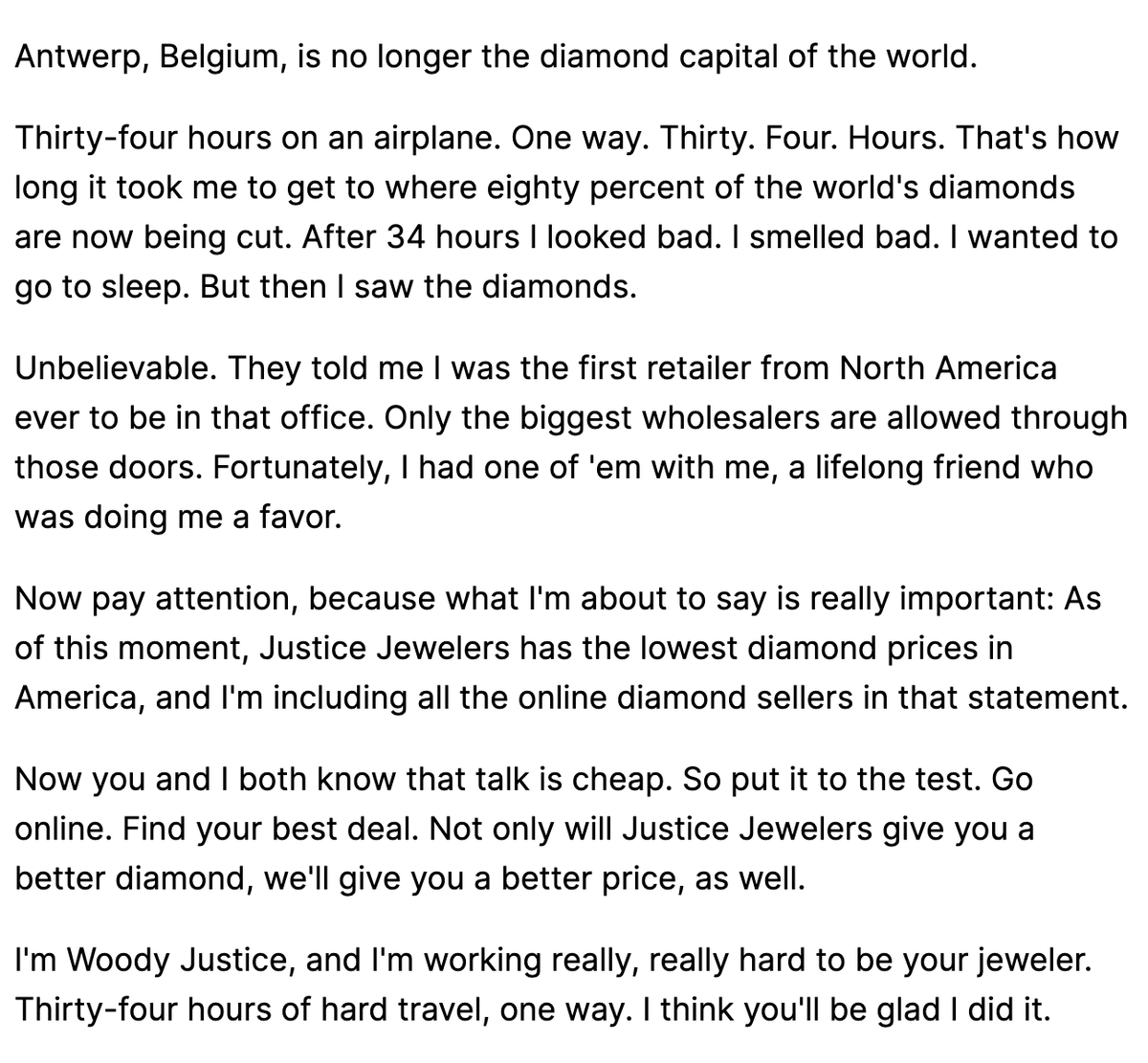
Tip from Blake: Write short, snappy sentences.
Reason: People have short attention spans. And big blocks of text are super hard to read. Make it
Example: Every blog from @Backlinko
Reason: People have short attention spans. And big blocks of text are super hard to read. Make it
Example: Every blog from @Backlinko
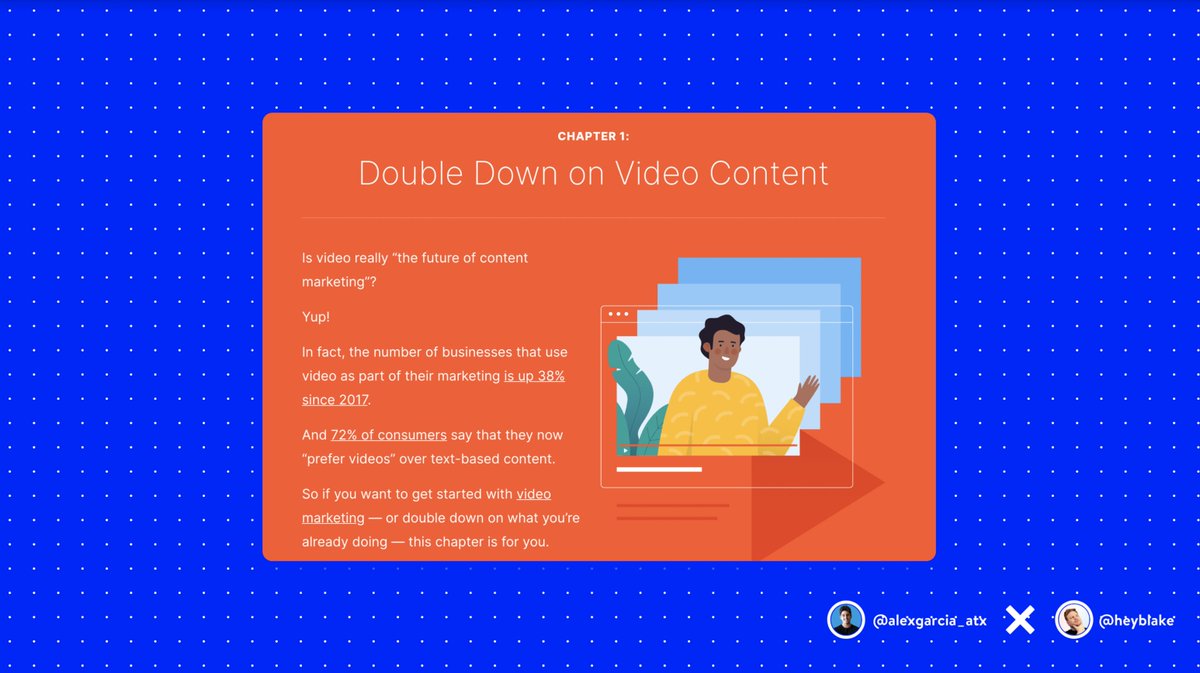
Tip from Alex: Replace Weasel Words With Promises
Reason: Words like may, can, hope, could, leave doubt in a reader's mind. You want readers to feel confident in their decisions. Use words like will, can, and do.
Example: @HubSpot
Reason: Words like may, can, hope, could, leave doubt in a reader's mind. You want readers to feel confident in their decisions. Use words like will, can, and do.
Example: @HubSpot

Tip from Blake: Start with an engaging hook.
Reason: The purpose of every sentence is to get readers to check out the next. A proper hook engages the reader immediately and piques curiosity.
Example: Zippo from a fish by David Ogilvy
Reason: The purpose of every sentence is to get readers to check out the next. A proper hook engages the reader immediately and piques curiosity.
Example: Zippo from a fish by David Ogilvy

Tip from Alex: Use Repetition
Reason: The repetition of words puts an emphasis on your messaging. It makes the main points memorable.
Example: New York Times
Reason: The repetition of words puts an emphasis on your messaging. It makes the main points memorable.
Example: New York Times

Tip from Blake: Optimize for clarity.
Reason: Clear writing beats clever writing every single time. People want to understand and then be delighted, not the other way around.
Example: Be concise chart
Reason: Clear writing beats clever writing every single time. People want to understand and then be delighted, not the other way around.
Example: Be concise chart

Tip from Alex: Use Opposites
Reason: They say opposites attract. The same goes for copy. Opposites are a powerful way to get someone's attention.
Example: Stella Artois
Reason: They say opposites attract. The same goes for copy. Opposites are a powerful way to get someone's attention.
Example: Stella Artois

Tip from Blake: Start in the middle of the story.
Reason: Begin with action. Don’t wait to excite and delight the reader until it’s too late.
Helper: masterclass.com/articles/tips-…
Reason: Begin with action. Don’t wait to excite and delight the reader until it’s too late.
Helper: masterclass.com/articles/tips-…
Tip from Alex: Use an active voice
Reason: Using an active voice illustrates taking action. And your goal is to make consumers take action. Writing with an active voice delivers a direct, strong, and punchy message.
Example: Nike

Reason: Using an active voice illustrates taking action. And your goal is to make consumers take action. Writing with an active voice delivers a direct, strong, and punchy message.
Example: Nike


Tip from Blake: Talk about them, not you.
Reason: People don’t care about you. They care about what you can do for them. Make that benefit abundantly clear.
Example: @mailchimp benefits copy
Reason: People don’t care about you. They care about what you can do for them. Make that benefit abundantly clear.
Example: @mailchimp benefits copy

Tip from Alex: Add humor
Reason: People share humorous content. The more you can make someone laugh, the more your messaging will spread. Plus, it’s memorable.
Example: Daihatsu
Reason: People share humorous content. The more you can make someone laugh, the more your messaging will spread. Plus, it’s memorable.
Example: Daihatsu

Tip from Blake: Write how you talk.
Reason: No one wants to read robotic language. People connect with people. The more human your writing sounds, the more humans will like it.
Example: @GoodMarketingHQ breakdown of @heyhey
Reason: No one wants to read robotic language. People connect with people. The more human your writing sounds, the more humans will like it.
Example: @GoodMarketingHQ breakdown of @heyhey

Tip from Alex: Tell Stories
Reason: Stories drive attention. Take the consumer into a different world. And create an emotional connection that’s hard to break.
Example: John Caples
Reason: Stories drive attention. Take the consumer into a different world. And create an emotional connection that’s hard to break.
Example: John Caples

Tip from Blake: Don’t be guided by grammar.
Reason: Focus on clear messaging and engaging storytelling more than grammar. This will create more connection with the reader than perfect sentence structure ever will.
Example: @postmates and chill
Reason: Focus on clear messaging and engaging storytelling more than grammar. This will create more connection with the reader than perfect sentence structure ever will.
Example: @postmates and chill

Tip from Alex: Use power words
Reason: Power words drive emotions. Emotions inspire consumers to take action. Your copy should make the consumer feel something.
Example: Winston Churchill
Reason: Power words drive emotions. Emotions inspire consumers to take action. Your copy should make the consumer feel something.
Example: Winston Churchill

Tip from Blake: Use format pattern interrupts.
Reason: Unique formatting can be a huge advantage. Words matter most, but format counts, too. Write in formats that help you stand out.
Example: RX Bars copy on product packaging
Reason: Unique formatting can be a huge advantage. Words matter most, but format counts, too. Write in formats that help you stand out.
Example: RX Bars copy on product packaging

Tip from Alex: Say more with less
Reason: The more value you can pack in shorter sentences, the better. It’s easier for the brain to digest and remember.
Example: Apple (again)
Reason: The more value you can pack in shorter sentences, the better. It’s easier for the brain to digest and remember.
Example: Apple (again)

Tip from Blake: Write 20% of the time, edit 80% of the time.
Reason: Vigilant editing and rewriting is the true mark of a great writer. The magic rarely happens in the first draft.
Helper: masterclass.com/articles/a-gui…
Reason: Vigilant editing and rewriting is the true mark of a great writer. The magic rarely happens in the first draft.
Helper: masterclass.com/articles/a-gui…

Tip from Alex: Use Analogies
Reason: Analogies help connect something complicated with something known.
Example: Dropbox
Reason: Analogies help connect something complicated with something known.
Example: Dropbox

Tip from Blake: Brain dump before anything else.
Reason: Getting all ideas on paper first helps organize the whole process. Then, build an outline. Next, write the sections. Finally, put it all together.
Helper: Copy.ai’s blog ideas tool
Reason: Getting all ideas on paper first helps organize the whole process. Then, build an outline. Next, write the sections. Finally, put it all together.
Helper: Copy.ai’s blog ideas tool

Tip from Alex: Rhyme
Reason: Rhyming keeps the reader's eyes moving organically. Naturally, it flows. This makes it more believable.
Example: Animoto
Reason: Rhyming keeps the reader's eyes moving organically. Naturally, it flows. This makes it more believable.
Example: Animoto

Tip from Blake: Pass the Friend Test.
Reason: It helps you write great copy. 1) Write 10 variants of a headline. 2) Send it to some friends and just ask them to read them. 3) Wait 24 hours and follow up. 4) The variant most remembered by that group is your headline.
Example:
Reason: It helps you write great copy. 1) Write 10 variants of a headline. 2) Send it to some friends and just ask them to read them. 3) Wait 24 hours and follow up. 4) The variant most remembered by that group is your headline.
Example:

Tip from Alex: Use Alliteration
Reason: Alliteration uses the repeat of initial consonants to put an emphasis on a benefit. Use it to address important points.
Example: Animoto (Imagine it. Create it.)
Reason: Alliteration uses the repeat of initial consonants to put an emphasis on a benefit. Use it to address important points.
Example: Animoto (Imagine it. Create it.)
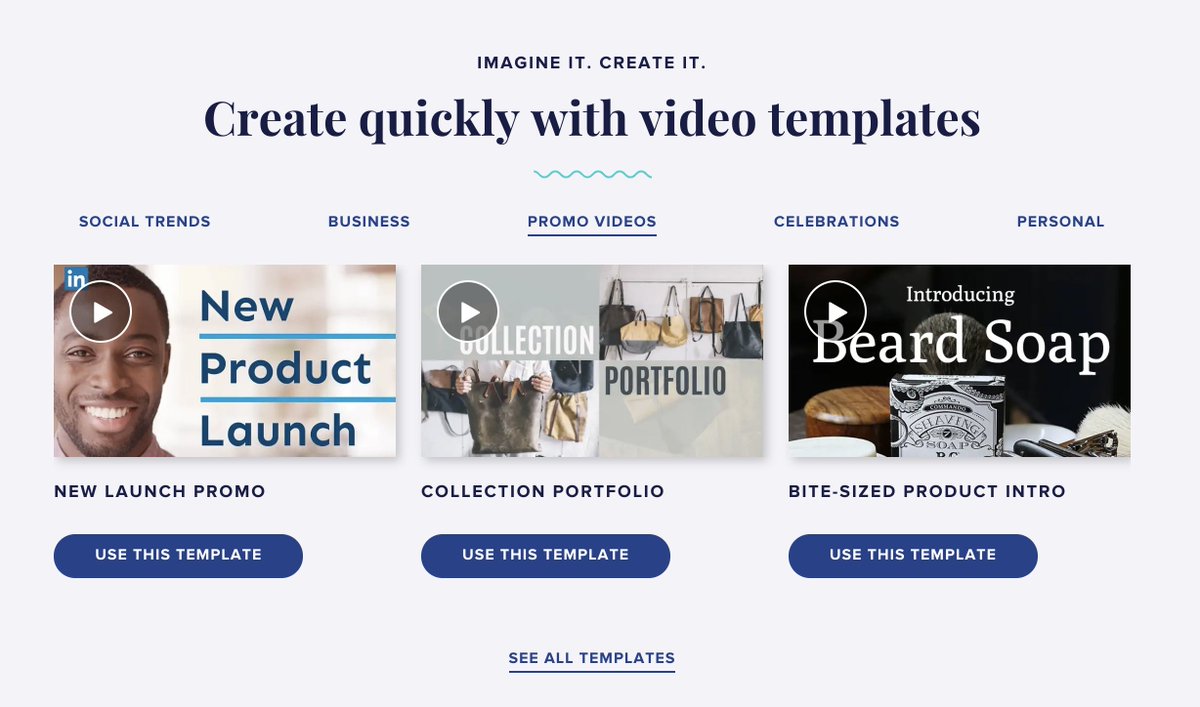
Tip from Blake: Pass the Voice Test
Reason: You don’t want to sound like a robot. Here’s how: 1) Read your written copy out loud. 2) If it sounds robotic or boring, rewrite it
Helper: Just say it out loud! No secret sauce here.
Reason: You don’t want to sound like a robot. Here’s how: 1) Read your written copy out loud. 2) If it sounds robotic or boring, rewrite it
Helper: Just say it out loud! No secret sauce here.
Tip from Alex: Copy Should Have a Goal
Reason: Every piece of copy should have a goal. If it doesn’t pass Amazon’s so what test -- then cut it. It’s fluff. If you can’t notice the goal -- neither can the consumer.
Example: KFC
Reason: Every piece of copy should have a goal. If it doesn’t pass Amazon’s so what test -- then cut it. It’s fluff. If you can’t notice the goal -- neither can the consumer.
Example: KFC

Tip from Blake: Focus on feeling over selling.
Reason: Refrain from pushing sales explicitly, and focus instead on helping the reader feel a strong emotion or connection
Example: Colin Kaepernick ad with @Nike
Reason: Refrain from pushing sales explicitly, and focus instead on helping the reader feel a strong emotion or connection
Example: Colin Kaepernick ad with @Nike

Tip from Alex: Be Honest
Reason: You want consumers to trust you. Being honest breaks the barrier between a business and a customer. Let them know it’s still people behind the words.
Example: Hyposwiss Bank
Reason: You want consumers to trust you. Being honest breaks the barrier between a business and a customer. Let them know it’s still people behind the words.
Example: Hyposwiss Bank

Tip from Blake: Minimize risk.
Reason: Make the requirements to get the solution seem smaller.
Example: $5 fee from Copyblogger
Reason: Make the requirements to get the solution seem smaller.
Example: $5 fee from Copyblogger

That’s all folks!
If you enjoyed this thread, please:
Follow us @alexgarcia_atx and @heyblake
Retweet the first tweet (it helps a ton!)
What tip are you most excited to try out first?
If you enjoyed this thread, please:
Follow us @alexgarcia_atx and @heyblake
Retweet the first tweet (it helps a ton!)
What tip are you most excited to try out first?
• • •
Missing some Tweet in this thread? You can try to
force a refresh





